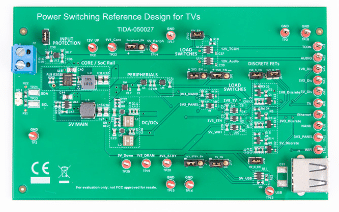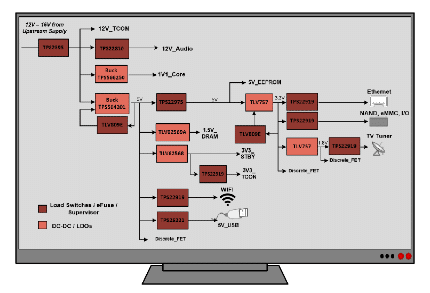Dive into how this design sets a new standard in the tech industry’s commitment to sustainability and efficiency.

With its approach to flexible partitioning, the power supply reference design marks a significant advancement in television technology, particularly in maximising power savings. This design is pivotal because it addresses the growing demand for energy-efficient electronic devices without compromising performance. By allowing for the selective activation of different power rails according to the operational needs of the television, it ensures that power consumption is optimised across various modes of operation. This leads to substantial energy savings and extends the television’s lifespan, offering an eco-friendly solution. Such advancements highlight the importance of integrating smart energy management systems into consumer electronics, reflecting a broader commitment to sustainability and efficiency in the tech industry.
The Texas Instruments TIDA-050027 reference design is a power distribution solution for Television (TV) platforms. This design can be used as a reference design across multiple TV power architectures, including LCD and OLED TVs by providing a configuration that emulates common voltage rails and peripherals. On the input, an eFuse is used for short-circuit protection. At the same time, the high-efficiency buck converters provide the necessary power for the core rail, always-on rails, and peripheral rails. Low-IQ, low-dropout regulators (LDO) provide clean digital power rails for specific peripherals. In addition to these power components, load switches control the voltage with controlled slew rates to allow for power sequencing and savings. Additionally, integrated load switches provide self-protection while reducing BOM count and solution size.

The comprehensive power tree for TV rail systems optimises design by offering a precise selection of load switches, buck converters, and LDOs for improved functionality. It features high-efficiency buck converters that enable quick transient response and lower the Bill of Materials (BOM), resulting in a more compact design. The system includes integrated protection to boost reliability and longevity while achieving higher efficiency and reduced standby current by deactivating unused loads. Load switches further streamline design by minimizing component count over traditional discrete FET solutions. In the industrial realm, the technology supports various devices, such as AC transmission relays for power management, Applications Processor Modules for industrial automation, and battery tests for power reliability. It also includes DC analog input/output modules for signal processing and wired communication modules for data transfer. In personal electronics, advancements have led to high-definition TVs and computing devices, including 4K and 8K TVs for unparalleled visual quality and HD LCD TVs, alongside standard notebook PCs that balance performance and portability.
Texas Instruments has thoroughly tested this reference design, which includes a Design Guide, Bill of Materials (BOM), schematics, Gerber files, Printed Circuit Board (PCB) layout, and more. Please visit the company’s website for further information on this reference design. To explore this design in greater detail, click here.






